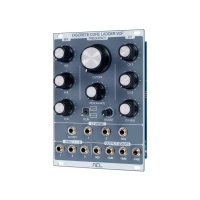19
Pilot Solenoid
The Pilot Solenoid terminals provide power to the Pilot Solenoid valve. The Pilot valve allows gas to flow through the pilot
valve train for initial ignition and flame sensing. During normal operation, the CSC400 turns on the pilot solenoid first while
attempting to light the pilot flame via the ignition module. The pilot's flame needs to be stable before the Main and T/Main
solenoid outputs are turned on.
This output has a low power solenoid feature provided by an onboard solenoid driver circuit. This circuit can reduce power
consumption of the solenoids by as much as 80%. This circuit also helps eliminate any noise that may be produced by some
solenoids, and helps extend the life of the solenoids.
For more information on the Low Power Solenoid Driver, see the Low Power Solenoid Drivers section on page 19.
Main Solenoid
The Main Solenoid terminals provide power to the Main Solenoid valve. Power to these terminals is present a minimum of 10
seconds (adjustable to 120s max) after the pilot's flame is detected and the shutdowns are satisfied.
The Main Solenoid output also has the same low power solenoid feature provided by an onboard solenoid driver circuit. For
more information on the Low Power Solenoid Driver, see the Low Power Solenoid Drivers section on page 19.
T/Main Solenoid (Process Temperature Control Valve)
The Temperature Main ("T/Main" or "TMain") Solenoid terminals provide power to the T/Main solenoid valve for process
temperature control. Power to these terminals is present a minimum of 10 seconds (adjustable to 120s max) after the pilot's
flame is detected and the shutdowns are satisfied. The T/Main solenoid valve is also controlled by the measured temperature
on Thermocouple 1 (TC1). This allows for individual temperature control of one of the main solenoids (T/Main), eliminating
unnecessary stroking of the main safety shutdown valves to control main gas to the burner.
The T/Main Solenoid output also has the same low power solenoid feature provided by an onboard solenoid driver circuit. For
more information on the Low Power Solenoid Driver, see the Low Power Solenoid Drivers section on page 19.
Low Power Solenoid Drivers
The Low Power Solenoid Drivers are individual control circuits added to each solenoid output that saves power drawn by the
solenoid by altering the cycle time power is delivered to the solenoid once it is driven fully on. Larger solenoids require more
power to keep them open, therefore needing a larger cycle time (eg: 40%). The cycle time percentage is shown in the Solenoid
Drivers menu section: 100% means the solenoid is driven without any power savings, 10% cycle time means that the maximum
power savings for the selected solenoid is utilized. The setting for each solenoid output must be verified to work with the
attached solenoid.

